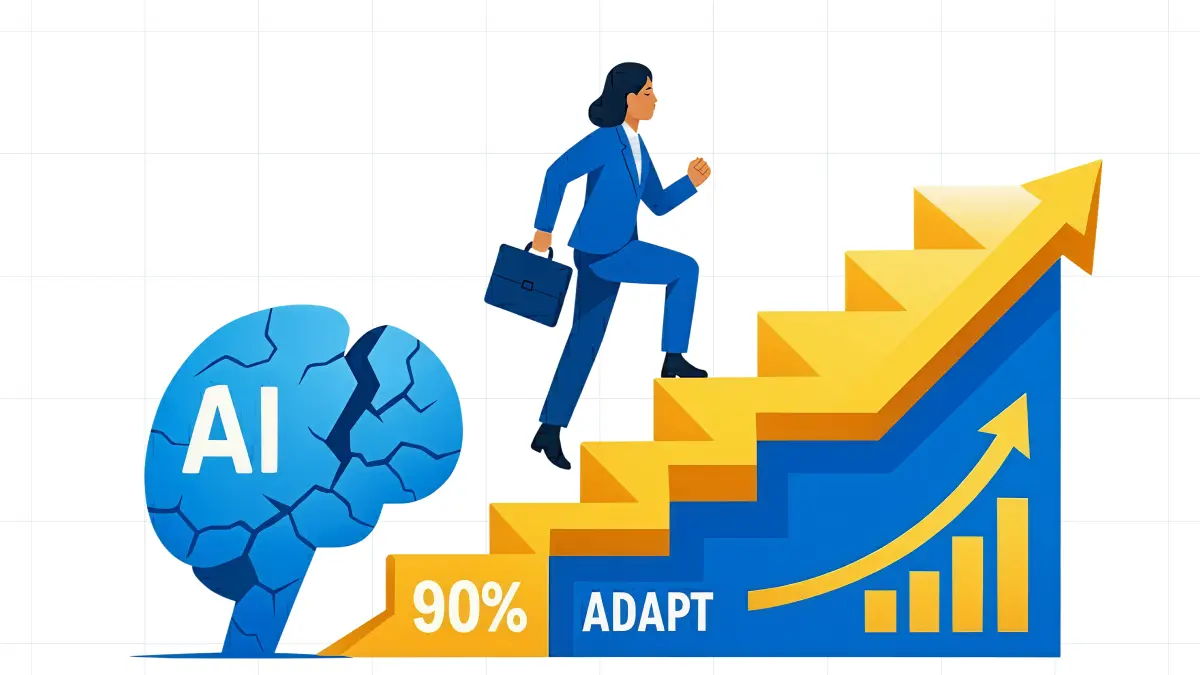AI Failure is a Superpower
Failing with AI isn't weakness. It's your competitive edge. The leaders who experiment, learn, and adapt will win.

In business, failure is often seen as binary: success or failure.
Yet, companies have long accepted failure rates of 70% to 90% in major initiatives, such as mergers and acquisitions.
Organizations routinely reassess and persist.
However, when adopting Artificial Intelligence, many leaders and employees hesitate, fearing the consequences of an initial failure.
AI adoption is inevitable, and ignoring it is no longer viable.
Success depends not on avoiding AI failure, but on leveraging it as a strategic advantage.
As I explored bringing AI into HR, I made multiple missteps.
My team likely will concur; I would jump in with both feet and eyes closed.
I was an AI optimist, so there was only possibility and no failure, but I knew it was all an experiment.
I knew we (I) would fail, but that would only lead to something better, and these tools and their performance increase exponentially.
AI in HR Today
with Anthony Onesto
Subscribe for exclusive insights from Anthony Onesto, Chief People Officer at Suzy, and learn how AI is reshaping HR, enhancing employee engagement, and driving business success.
TOGETHER WITH
Normalizing the Flop: Vulnerability is a Superpower
Creating a culture where employees feel safe experimenting with AI tools must begin with leadership.
Taskrabbit CEO Ania Smith exemplifies this by introducing a "Nailed it, Failed it" segment in company meetings, encouraging employees to share their experiences with AI openly.
This approach normalizes failure and demonstrates that experimentation with AI is not only allowed but expected.
Workday CMO Emma Chalwin supports this approach, emphasizing that vulnerability is a strength.
Learning from mistakes and sharing future actions makes the risk worthwhile.
Leaders must become comfortable with discomfort.
The purpose of AI is not to replace people, but to automate repetitive, non-strategic tasks.
When AI fails at such tasks, it offers valuable data, allowing employees to focus on creativity and innovation.
The Strategic Value of Human Intervention
When an AI pilot hits a wall, L’Oréal CHRO Stephanie Kramer advises leaders to focus on the human element: why are people needed to fix it?
This is where the HR and People functions, the champions of culture, need to step up.
In M&A, HR and People teams, as champions of organizational culture, must take the lead.
The same goes for AI adoption.
The failure of an AI tool is often a result of scoping or integration issues - a people problem, not a technology problem.
When AI fails, it forces you to clarify the true organizational challenges and prioritize the unique role of human strategy.
We should redefine the problem.
Treat every AI initiative as a management and integration challenge, rather than solely an IT project.
This is why, in this article, I wrote that HR Leaders Must Champion The AI Revolution.
AI as a Catalyst for High-Impact Work
Pinterest CPO Doniel Sutton advises women to lean in to AI, despite the fact that women are currently adopting AI tools at a 25% lower rate than men.
Why? AI can lessen the burden of "invisible work".
This shift allows employees to focus on strategic, high-impact work.
The time saved should be used to develop an entrepreneurial mindset.
Leverage this opportunity to generate ideas, build prototypes, and test for product-market fit within your role.
AI is not going to put you out of a job; a failure to leverage it will.
AI failure, properly analyzed, is a data point that clarifies what your job needs to be in the future.
Do not risk being left behind when others solve these challenges and automate your tasks.
Take control of your future, as AI adoption is imminent.
AI in HR Today
with Anthony Onesto
Subscribe for exclusive insights from Anthony Onesto, Chief People Officer at Suzy, and learn how AI is reshaping HR, enhancing employee engagement, and driving business success.
